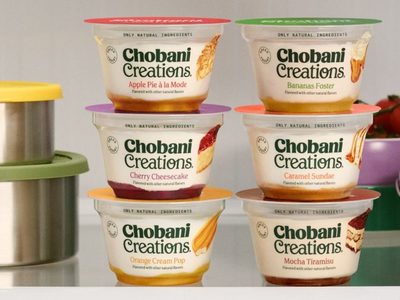Delving into dairy ingredients
When most product developers think of formulating with dairy, consumer products such as butter, cheese and yogurt come to mind. But there are also many industrial ingredients that may be used for various functional and nutritional purposes.
“Dairy concentrates assist with creating great flavor and hitting cost targets,” said Kevin Towles, consulting chef to First Choice Ingredients, Germantown, Wis.
Dairy concentrates and flavors are tools that may be used in conjunction with dairy products to ensure consistent flavor delivery.

“Whenever I develop cream or cheese base sauces, I almost always include at least one dairy concentrate flavor,” Mr. Towles said. “For example, in a three-cheese macaroni, I use the predominate cheese, such as aged white cheddar, and supplement that with concentrates of Maytag blue cheese and smoked Gouda.”
Roger Mullins, senior vice-president at First Choice added, “Dairy concentrates can provide signature flavor profiles to basic recipes and help control costs, sodium, fat and more, all while being label friendly, as the concentrates are made from real dairy products.”
He offered the following idea. “You can add a Gruyère concentrate to an alfredo sauce to obtain a sweet, nutty profile,” he said. “This is more economical and easier to do than melting Gruyère into the sauce.”
Christian Atkinson, development chef, DairiConcepts L.P., Springfield, Mo., said, “Concentrated pastes are made with real dairy components. Many are made with a base of 60% to 85% real cheese or other dairy products.”
This enables the finished product to feature a label claim of being made with real butter, cheese, cream or whatever the concentrate may be.
On the powdered side, nonfat dried milk is a commonly used dairy ingredient. It is a concentrated source of protein, which enables it to assist with emulsifying and stabilizing viscous systems. It also contains the reducing sugar lactose, which together with protein, promotes the Maillard browning reaction in baked or heated applications. Maillard browning is largely responsible for the characteristic golden-brown color of baked goods and caramelized products.
“I use milk powder in all of our ice cream recipes as a natural stabilizer,” said Jacquy Pfeiffer, chef and academic dean at The French Pastry School, Chicago. “It allows for a reduction of sucrose and fat while helping with texture and mouthfeel.”

Whey is another common industrial dairy ingredient, most often used to boost the protein content of foods and beverages. Select whey protein ingredients may also function as egg replacers in baked goods.
Permeate, which may be made from milk or whey, has the ability to assist with sodium reduction.
“Using up to 10 parts permeate to one part sodium, you can lower sodium by up to 50% in various applications, including baked goods, sauces, soups and seasonings,” Ms. Minasian said.



